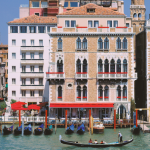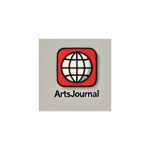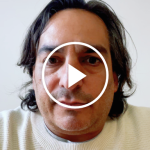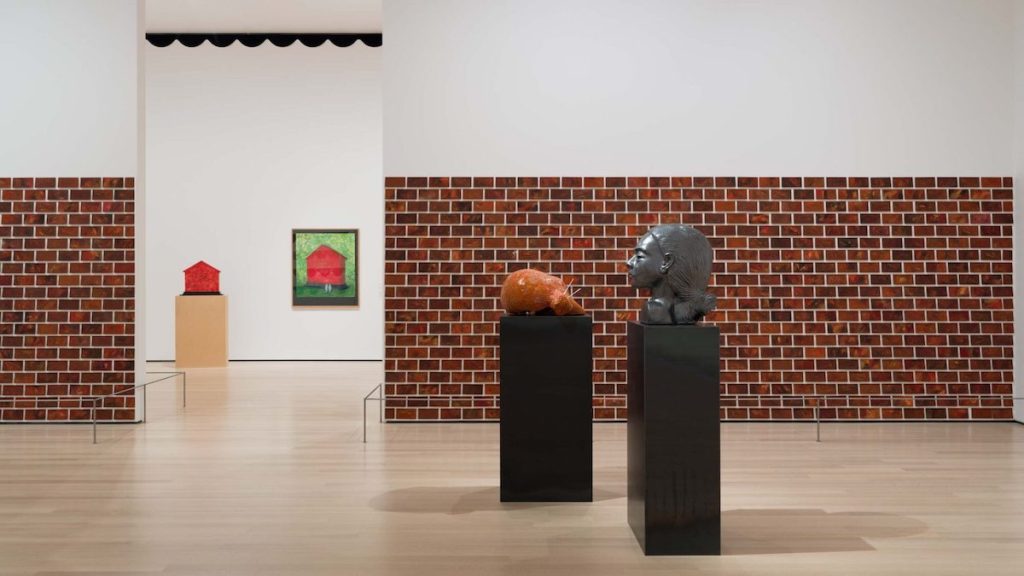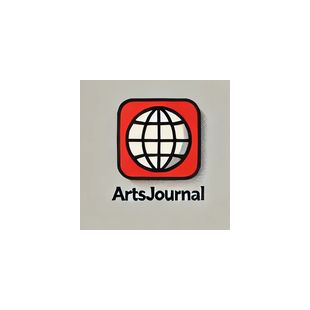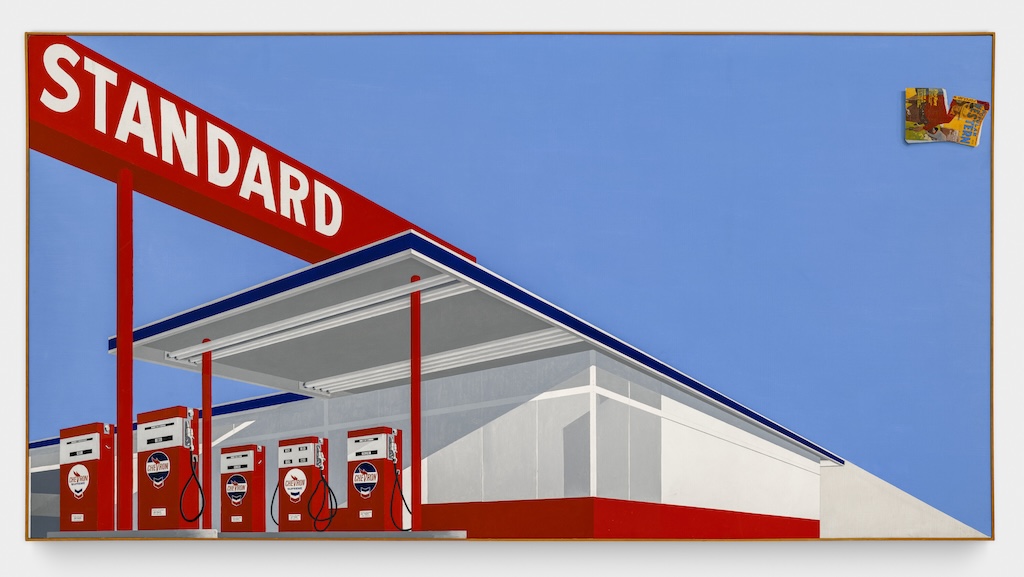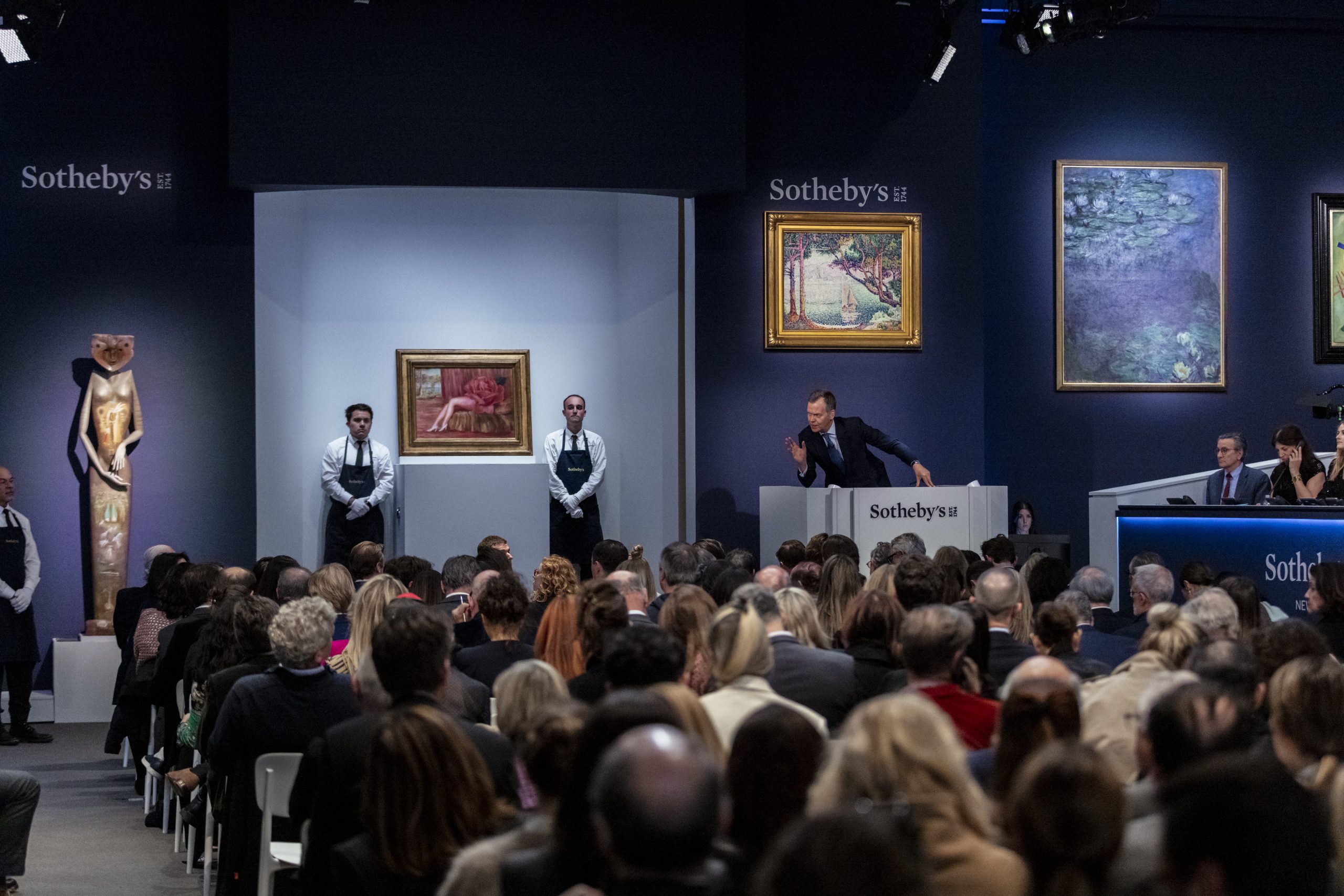Just a few years after Germany was reunified, Thomas Schütte began making his “United Enemies” sculptures (1993–94), each composed of two figures that are knotted together by string and encased in a glass bell jar. Their lumpy, gnarled faces appear to deform, as though they were made from mashed-together Play-Doh; their bodies are largely missing, rendered only as peg legs and chests wrapped in fabric. These are misshapen people that are so closely bound as to be inseparable—odd couples, perhaps, for Schütte’s newly reorganized nation.
Inevitably, the “United Enemies” sculptures have been interpreted as emblematizing the mood of post-1990 Germany. Critic Alexander Alberro, for example, once remarked in 1998 that they were “clearly a comment on the growing resentment felt by both East and West Germans towards each other.”
But nothing is ever quite so clear with Schütte, an artist who dabbles in a gentle form of evasion, and who has said outright that he doesn’t agree with those analyses. “Somebody told me they were about the German reunification, but I couldn’t really follow that,” Schütte said that same year.
What does it mean, then, that the “United Enemies” sculptures are most interesting as allegories, and that much of the rest of Schütte’s oeuvre is most fascinating when viewed as commentary on the specters of fascism rather than as formalist objects? Maybe we shouldn’t necessarily take Schütte at his word, if his newly opened Museum of Modern Art retrospective acts as proof. This strange show positions him first and foremost as a political artist, even when his sensibility is not always visible in his art.

Thomas Schütte, United Enemies, 1994.
©2024 Thomas Schütte/Artists Rights Society (ARS), New York/VG Bild-Kunst, Bonn/Photo Peter Cox/De Pont Museum, Tilburg, Netherlands
The exhibition, curated by Paulina Pobocha, may just reframe how you see his work. It did for me, anyway. As artists deserving of MoMA retrospectives go, Schütte was not previously high on my list. He’s got the necessary bona fides to receive such an honor, including a Golden Lion for his participation in the 2005 Venice Biennale, but his work always struck me as ambiguous to a fault, at times even downright corny.
Not every work in this show is a hit. His much-loved sculptural installation Melonely (1986), an oversized wooden version of a sliced-up melon, remains a one-note experiment whose formal concerns about scale can’t substantiate the work’s cutesy aesthetic. Three aluminum sculptures from roughly a decade later resemble flabby beings who writhe around above viewers’ heads. They each recall like the Michelin Man, albeit taller and less friendly. None of them would seem out of place at an art fair booth today.

Schütte’s MoMA retrospective features works such as Melonely (1986, at center).
Photo Jonathan Dorado/The Museum of Modern Art
Yet these are flashy exceptions among the 100 or so works at MoMA, many of which are good-looking and conceptually durable—and nicely installed, too.
The retrospective, which currently occupies an entire floor of the museum, is organized non-chronologically such that Schütte’s early subversions of Minimalism and Conceptualism, dating back to the 1970s, are interspersed among his more recent creations. This renders it tough to follow the arc of Schütte’s career, and tougher still to make sense of certain of his more beguiling works, including a painting of a planned monument to Alain Colas, a sailor lost at sea that was to resembled a gigantic head that would have bobbed atop the ocean’s surface near the French city of Clamecy. (Schütte’s proposal for that work was rejected, but he did make an homage to Colas in the form of a 110-pound hunk of clay coated in drippy paint and mounted atop two stacked pallets.)

Schütte’s Schutzraum (Shelter), from 1986, is one of the show’s strongest works and appears toward its end.
Photo Jonathan Dorado/The Museum of Modern Art, New York
Might I suggest starting at the end, then? There, in the final gallery, you’ll find a work that clarifies Schütte’s practice writ large: his 1986 sculpture Schutzraum (Shelter), a concrete structure that could nearly function as a doomsday dwelling if it weren’t meant as art. Schutzraum seems to bear witness to the possibility of total annihilation, yet it offers little in the way of sanctuary, since it is stony, cold, and not quite large enough to be usable. A soundtrack of a woofing dog and a distant siren plays from somewhere within, though it’s tough to find the speaker emitting these noises. Perhaps that speaker is located somewhere behind the piece’s closed door, locked away along with any straightforward political statements one may want this piece to make.
Schütte’s sensibility owes a lot to the dampened, depressed ethos of postwar Germany. According to a recent New York Times profile of the artist, during World War II, Schütte’s father served as a lieutenant in Hitler’s army; he ended up being sentenced to five years of forced labor abroad. But by the time Schütte was born in 1954 in Oldenburg, his dad had become an engineer. Schütte père never spoke much about what happened during the wartime years; that wasn’t unusual in a country where discussions about the crimes of the Nazis were sometimes kept out of sight, out of mind.
Maybe it’s for that reason that Schütte’s art exhibits a kind of muteness. Another explanation may be the rise of Minimalism. As a teenager, in 1972, Schütte twice visited Documenta IX, Harald Szeemann’s sprawling exhibition in Kassel that featured, among many other artworks, a Richard Serra sculpture composed of four 24-foot-long steel plates, each extending diagonally toward the center of a room from its walls. That work and similar pieces, with their unfeeling aesthetic, seem to have inspired Schütte, who would go on to study at the Kunstakademie Düsseldorf, then the site of an artistic mini-renaissance.
Amerika (1975), one of the pieces Schütte made as a student there, is the earliest great work by him in the MoMA retrospective. It’s a giant, forbidding square of dark pencil marks, rendered with such repetition and force that the paper beneath has bulged under the weight of his graphite scrawls. The piece greets the viewer’s gaze with a whole lot of nothing, as if it were withholding something—but what? The piece returns no answers, though its title may offer a clue. Schütte named the work after the brand that produced the pencils he used; he planned to sell the work, then direct the funds gained toward a trip to the US, which he never ended up taking. Amerika bespeaks a sense of failed promise, something with which many Germans were familiar at the time.

Thomas Schütte, Selbstportrait. 30/31.5.75 (Self-portrait: 5/30–31/75), 1975.
©2024 Thomas Schütte/Artists Rights Society (ARS), New York/VG Bild-Kunst, Bonn/Photo Luise Heuter/Collection of the artist, Düsseldorf
In the ensuing years, Schütte studied with Gerhard Richter up until 1981, the year Schütte graduated with a master’s degree, and his experiments with painting deepened. He produced such works as Große Mauer (Large Wall, 1977), an astoundingly odd whatsit resembling a brick wall, each component of which is actually a smeary, maroon-ish abstract painting that looks not unlike the kind produced by his mentor. To make the work, Schütte spent months studying the brickwork at a senior living facility near Düsseldorf, but all the knowledge gained seems to have been written off altogether in the end result. Likewise any admiration of Minimalism, whose obsession with grids and precision Schütte subverts by hanging these paintings ever so slightly askew.
Here’s where things get interesting. Comparisons between this piece and the Berlin Wall were inevitable. Less inevitable are the ones to postwar rebuilding efforts noted by art historian Benjamin H. D. Buchloh, who has written of the “repressive dimension of German architecture.” If Große Mauer resembles a brick wall that can never be utilized as one, that was the point. Schütte found a way to undermine the very structures that could be seen all around his nation, as if to say that their removal was the only way to begin remembering what had led to their destruction in their first place.
Then again, Schütte has claimed that the work had nothing much to do with the Berlin Wall at the time. Is this willful obstruction, or is Schütte really just a formalist at heart? The frustrating—and at times thrilling—thing about his MoMA retrospective is that it remains unclear.

Modell für ein Museum (1982, at back) is among the works include that resembles an architectural model.
Photo Jonathan Dorado/Museum of Modern Art
Schütte’s various works about monuments remain particularly troublesome. Some, like 1994’s Großer Respekt (Large Respect), in which tiny steel people mill around a miniature statue on a raised plinth, compellingly cut these public sculptures down to size, exposing civic artworks as tiny political vessels.
But confusingly, sometimes Schütte’s faux monuments are actually monumental, as in the case of Vater Staat (Father State), 2010, a 12-foot-tall sculpture of an armless man in a trench coat knotted at its waist. Schütte’s sculpture appears menacing, perhaps even vaguely evil, but so, too, did many of the Soviet-era monuments that once proliferated around Europe.
There is a heart of darkness guiding Schütte’s art, but it’s most successful when placed front and center, as it is in his 1982 installation Modell für ein Museum (Model for a Museum), which, as its name states, is a model for a proposed institution. It’s composed of a gigantic grey triangle with two chimney-like forms protruding from its flattened top. (Schütte does have his own museum, the Skulpturenhalle in Neuss, Germany, but it looks nothing like this.) The structure appears more like a forbidding furnace than an art space, which is, of course, the point. Schütte seems to enjoy the possibility that some might gaze at this model and see a museum, not a crematorium. The ghosts of the wartime era haunt this piece, but they’re only visible to those who squint. The eye sees what it wants to see.
